Quadruple or Duple – What is the Time Signature?
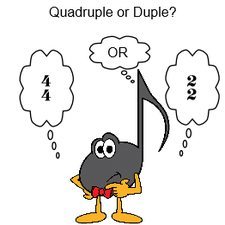
Quadruple or Duple – What is the Time Signature?
Is there a difference between Quadruple or Duple in Simple Time?
When looking at a melody/rhythm, how can you tell whether the Time Signature is 4/4 or 2/2 Time?
If this confuses you, you are not alone!
This Blog will look specifically at the Tips to Tell whether the Time Signature is 4/4 or 2/2.
What is Simple Quadruple or Duple?
First of all - what is Simple Quadruple Time and what is Simple Duple Time?
Simple Time is a Time Signature with a Top Number of "2", "3" or "4".
The Bottom Number of the Time Signature indicates the type of note that equals one Basic Beat. ("16" = a sixteenth note; "8" = an eighth note; "4" = a quarter note and "2" = a half note)
Simple Duple Time is a Time Signature with a Top Number of "2". There are 2 Basic Beats per measure.
Simple Quadruple Time is a Time Signature with a Top Number of "4". There are 4 Basic Beats per measure.
This concept is taught beginning on Page 95 of the Ultimate Music Theory Basic Rudiments Workbook.
Question #1 - Simple Quadruple or Duple?
Add the correct Time Signature under each bracket.

When adding the Time Signature, always double check by:
- Scooping each Basic Beat in the rhythm/melody
- Writing the Basic Beat below each Scoop
- Adding the Pulses below each Basic Beat
Here is one possible answer:
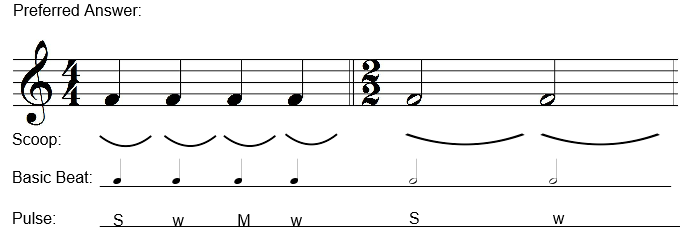
As you can see, I "proved" my answer by Scooping each Basic Beat, adding the Basic Beats and adding the Pulses.
However, there is also another possible (another "acceptable") answer:
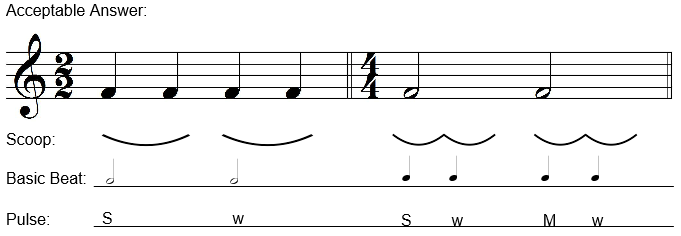
Why is this acceptable? Simply because the Scoops, Basic Beats and Pulses work here too! So either of these answers would be correct as there is simply not enough "musical information" for us to argue either way.
Tips to Tell Simple Quadruple or Duple #1 - Beams
The first tip is to look at the beaming of the eighth notes. If the eighth notes are beamed into obvious groups of 2 eighth notes, that is a good tip to tell that you are in Simple Quadruple. If the eighth notes are beamed into obvious groups of 4 eighth notes, that is a good tip to tell that you are in Simple Duple.

Wouldn't it be nice if it was always this SIMPLE! Alas, it is also acceptable to group your eighth note beams like this:

If you are a Composer, please remember that it is always best to join your beams according to the Basic Beats! It makes it easier for all of us to feel that pulse!
Tips to Tell Simple Quadruple or Duple #2 - Irregular Groupings
Sometimes looking at how the Composer uses irregular groupings of notes (triplets, etc.) and the note value will guide us towards a Simple Quadruple or Simple Duple distinction. (Key word - SOMETIMES!)
For each of these examples using triplet eighth notes, Clap the Rhythm with your hands, Tap the Steady Basic Beat with your foot and Feel the Pulse. Which Pulse is easier to "feel"?

Please note that it is "acceptable" to use this triplet pattern in 2/2 time. There is no law prohibiting Composers to write it. However, do you find it as awkward as I do to "clap the rhythm, tap the Basic Beat and feel the pulse"?
How about these Triplet Half Note rhythms?
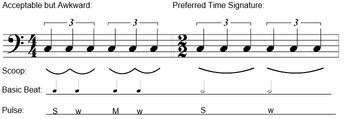
I learned a long time ago to "never say never" in theory. But if you were a Composer and you wanted me to play Triplet Half Note Rhythms, I would really prefer that you wrote the music in 2/2 (Simple Duple) and not in 4/4 (Simple Quadruple)!
Tips to Tell Simple Quadruple or Duple #3 - Feel the Pulse
To help students feel the pulse, I am a firm believer in the "Clap, Tap and Rap" game. For this game, students must:
- Clap - Clap the rhythm;
- Tap - Tap the Basic Beat with their foot/toe;
- Rap - Count aloud and "feel" the pulse (use a louder voice for the Strong and Medium pulses, and use a softer voice for the weak pulses).
In the Intermediate Workbook, Page 79, Review Test Question 2, the instruction is to add the correct Time Signature. Here is the rhythm:
![]()
Which Time Signature do you prefer? 4/4 or 2/2? "Clap, Tap and Rap" each rhythm.

In the Answer Book, we have answered with 4/4, as that is the preferred answer. However, 2/2 is also acceptable.
When looking to add the Time Signature to a rhythm that is either going to be Simple Quadruple or Duple, ask your student to "prove it". Can they comfortably and easily "Clap, Tap and Rap" it?
Teaching Students how to Feel the Pulse
In the Ultimate Music Theory Level 2 Supplemental Workbook, we introduce the "Tap with Ti-Do" Exercise. This "Ti-Do Time" exercise encourages Teachers to have their students TAP the Basic Beat with their foot while they CLAP each rhythm and COUNT out loud. ("Clap, Tap and Rap"!)
Having students clap the rhythm, tap the Basic Beat and "rap" the counting (out loud) is a vital part of ensuring that they See, Hear and Feel the pulse. And it makes it easier to identify whether that Time Signature is Simple Quadruple or Duple!
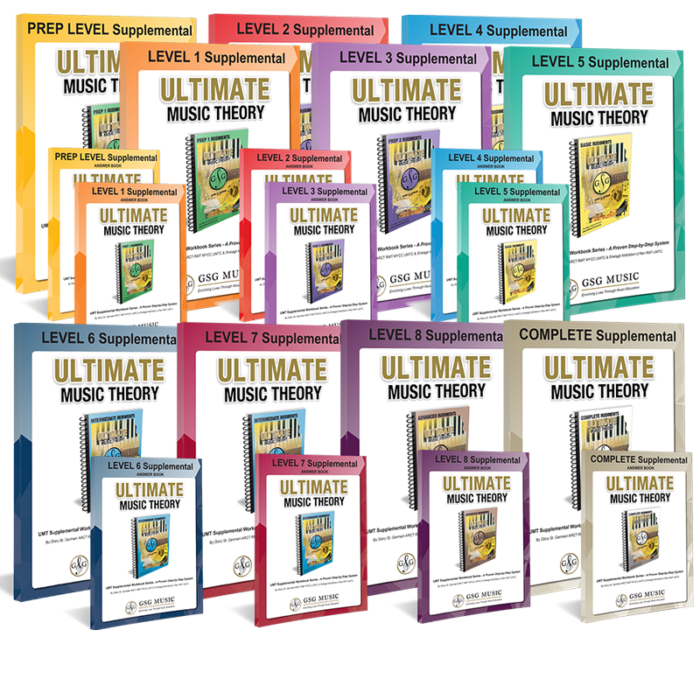
Supplemental Teacher Pack - Includes All 20 Supplemental Books - PREP, LEVELS 1 - 8 and the COMPLETE Supplemental Workbooks and all Matching Answer Books.
To help you even more we've created FREE RESOURCES for you to use as learning tools and building blocks in your musical adventure.
Keep on Learning... With a Smile and a Song!
Shelagh McKibbon-U'Ren

